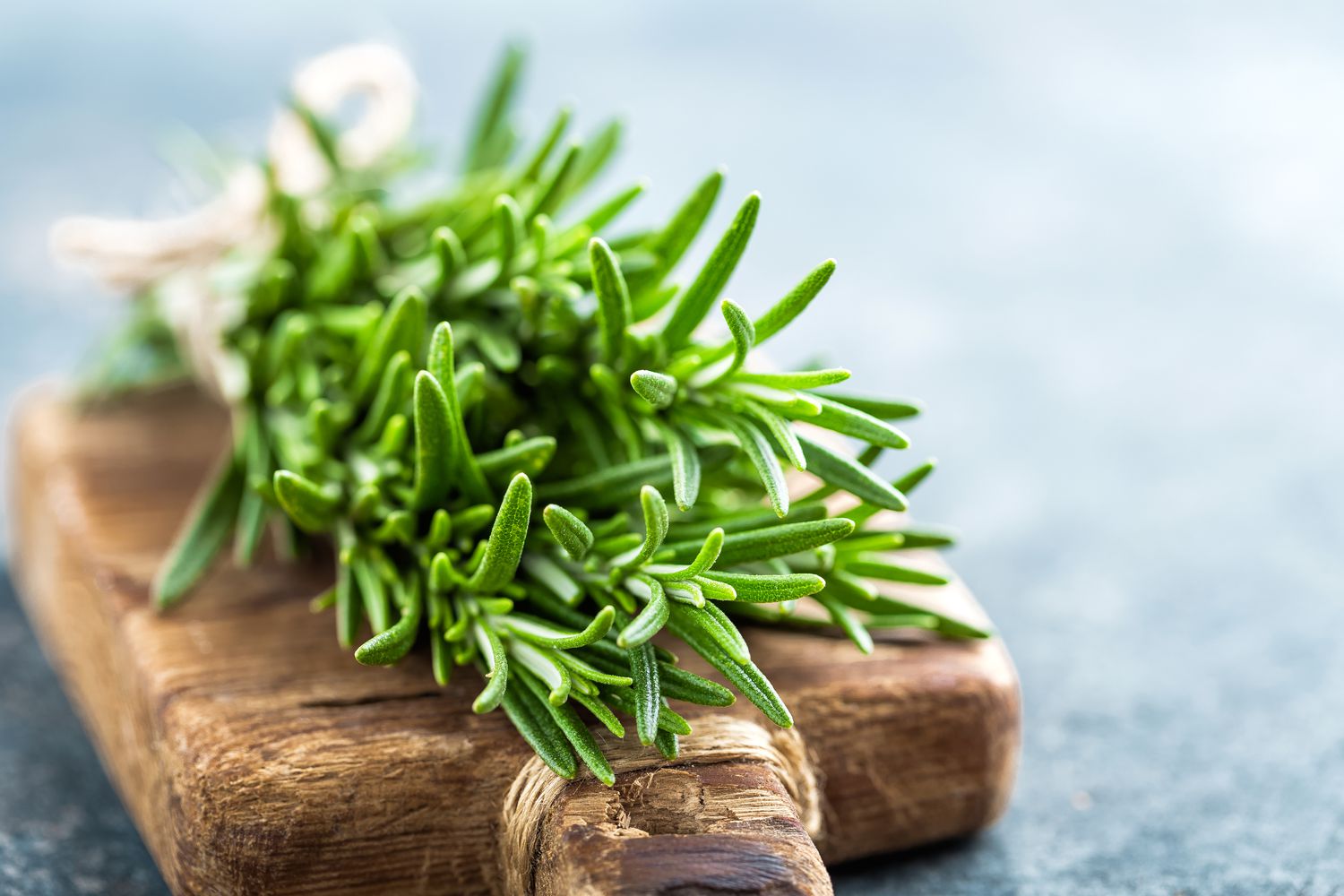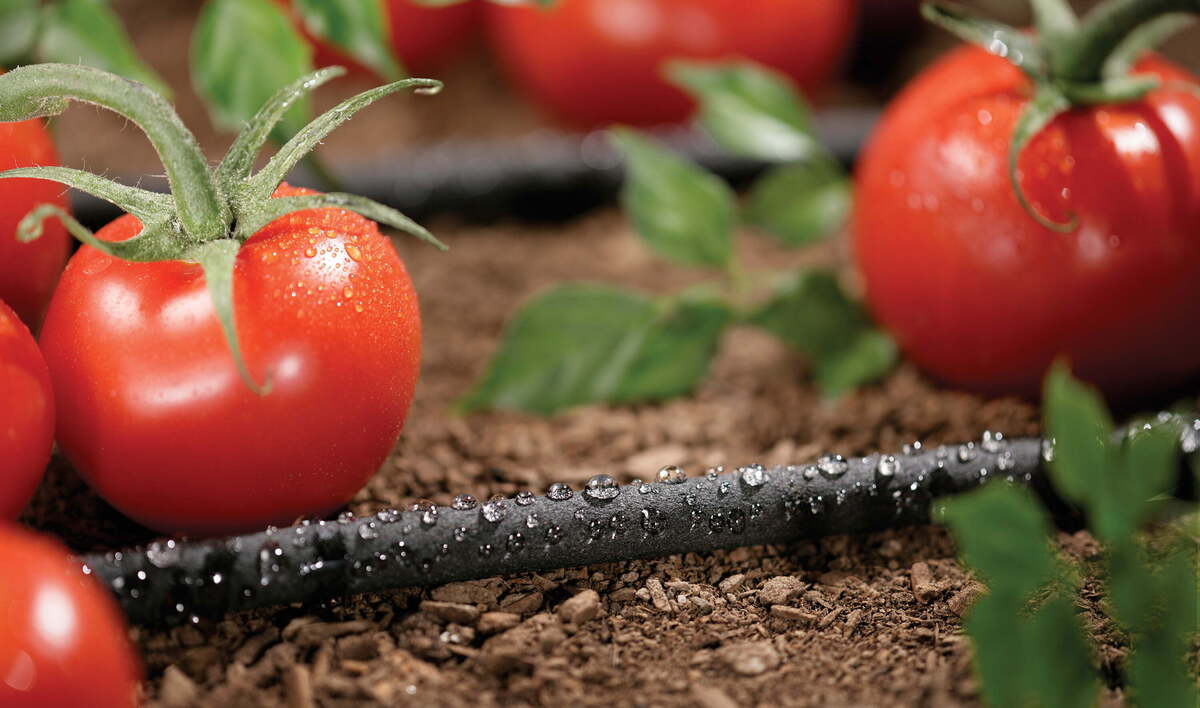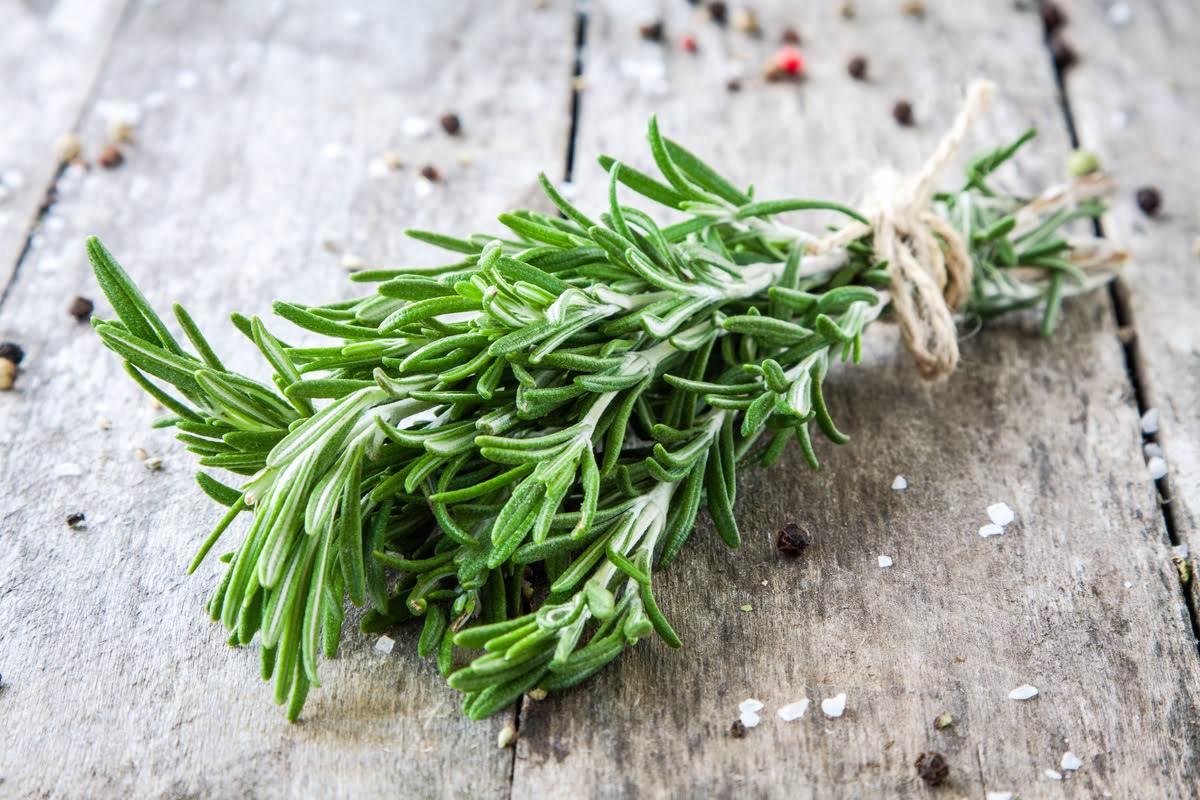Home>Types of Gardening>Edible Gardening>How Long Does Fresh Rosemary Last In Fridge


Edible Gardening
How Long Does Fresh Rosemary Last In Fridge
Modified: January 29, 2024
Discover the shelf life of fresh rosemary in the fridge and learn how to make it last longer. Get expert tips on edible gardening to keep your herbs fresh and flavorful.
(Many of the links in this article redirect to a specific reviewed product. Your purchase of these products through affiliate links helps to generate commission for Chicagolandgardening.com, at no extra cost. Learn more)
Table of Contents
Introduction
Welcome to the world of edible gardening, where you can experience the joy of growing your own food right in your backyard or even on your windowsill. Edible gardening allows you to nurture and harvest fresh, organic produce, giving you complete control over what goes onto your plate. One popular herb that can be grown in an edible garden is rosemary, known for its delightful fragrance and versatile culinary uses.
But how long does fresh rosemary last in the fridge? This is a common question among gardeners and home cooks who want to make the most of their abundant rosemary harvest or store bought bunch. In this article, we will explore the factors that affect the shelf life of fresh rosemary and provide tips on how to properly store it to maximize its lifespan.
Whether you plan to use it as a seasoning in your favorite dish or as a decorative herb arrangement, understanding how to maintain the freshness and quality of fresh rosemary is crucial. With the right storage techniques, you can ensure that your rosemary stays flavorful and aromatic for as long as possible.
So, if you’re ready to dive into the world of fresh rosemary and learn how to make it last, let’s get started!
Factors Affecting the Shelf Life of Fresh Rosemary
The shelf life of fresh rosemary can vary depending on several factors. By understanding these factors, you can take appropriate measures to prolong the freshness and quality of your rosemary. Here are the key factors that can affect the shelf life of fresh rosemary:
- Quality of the Rosemary: The initial quality of the rosemary plays a significant role in determining its longevity. Look for fresh rosemary that has vibrant green leaves, with no signs of wilting or discoloration. Choosing high-quality rosemary from the start will give you a head start in extending its shelf life.
- Storage Temperature: Rosemary prefers cool temperatures. When stored at the proper temperature, it can stay fresh for a longer period. Ideally, fresh rosemary should be kept in the refrigerator, where the temperature is between 35°F to 40°F (1.7°C to 4.4°C). Avoid placing fresh rosemary near the freezer compartment, as extreme cold can damage the leaves.
- Moisture Level: Excess moisture can cause fresh rosemary to rot quickly. It is essential to keep the rosemary dry to prevent the growth of mold and bacteria. Before storing the rosemary, gently pat it dry with a paper towel to remove any excess moisture.
- Air Exposure: Fresh rosemary should be protected from excessive air exposure, as it can lead to wilting and loss of flavor. To minimize air exposure, store the rosemary in an airtight container or wrap it in a damp paper towel, then place it in a plastic bag with a few holes for ventilation.
- Harvesting Time: The freshness of rosemary can also be influenced by when it is harvested. Ideally, it is best to harvest rosemary in the morning when the essential oils are at their peak. This ensures maximum flavor and aroma, which can contribute to a longer shelf life.
By considering these factors and taking proper precautions, you can extend the shelf life of fresh rosemary and enjoy its culinary benefits for a longer duration.
Proper Storage of Fresh Rosemary
Proper storage is key to maintaining the freshness and flavor of fresh rosemary. Here are some guidelines to ensure the optimum storage conditions for your rosemary:
- Trim the Stems: Before storing fresh rosemary, trim the stem ends by about half an inch. This helps to promote water absorption and prolongs the life of the herb.
- Remove Any Damaged Leaves: Inspect the rosemary sprigs and remove any leaves that appear wilted or discolored. Removing damaged leaves helps to prevent spoilage and maintains the visual appeal of the herb.
- Wrap in a Damp Paper Towel: Place the trimmed rosemary sprigs on a damp paper towel, then roll it up loosely. The damp paper towel helps to maintain the herb’s moisture level while preventing excess moisture buildup.
- Store in an Airtight Container: Transfer the wrapped rosemary bundle to an airtight container, such as a plastic bag with a few ventilation holes or a food storage container. This helps to protect the rosemary from exposure to air and moisture, which can cause wilting and loss of flavor.
- Refrigerate Properly: Place the airtight container with the rosemary in the refrigerator’s crisper drawer. The cool temperature will help to prolong the freshness and flavor of the herb. Avoid storing rosemary near fruits or vegetables that release ethylene gas, as it can accelerate spoilage.
- Utilize Freezing Method: If you have an abundance of fresh rosemary, consider freezing it for long-term storage. Simply remove the leaves from the stem, place them in a labeled freezer bag, and store them in the freezer. Frozen rosemary can be used directly in recipes without thawing.
By following these storage guidelines, you can maximize the shelf life of fresh rosemary and have it readily available for your culinary creations.
Signs of Fresh Rosemary Going Bad
While fresh rosemary is known for its long shelf life compared to other herbs, it can still go bad if not properly stored or handled. Here are some common signs to look out for to determine if your fresh rosemary has gone bad:
- Discoloration: One of the first signs that fresh rosemary is no longer fresh is discoloration. The vibrant green leaves may turn dark or brown, indicating decay and loss of flavor.
- Wilted Leaves: Fresh rosemary should have firm, upright leaves. If you notice that the leaves have started to wilt or become limp, it is a clear indication that the herb is no longer at its peak freshness.
- Slimy Texture: Excessive moisture can cause fresh rosemary to develop a slimy texture. If you touch the leaves and they feel sticky or slimy, it is a sign that microbial growth has occurred, and the herb should be discarded.
- Mold or Foul Smell: Inspect the rosemary carefully for any signs of mold growth. Discard the herb if you notice any fuzzy, moldy patches on the leaves. Additionally, a foul or off-putting odor is a strong indication that the rosemary has spoiled.
- Loss of Aroma: Fresh rosemary should have a strong, distinct aroma. If you notice a significant reduction in the herb’s fragrance or if it smells musty or unpleasant, it is likely past its prime.
If you detect any of these signs in your fresh rosemary, it is best to err on the side of caution and discard it. Using spoiled rosemary can lead to unpleasant flavors in your dishes and potentially cause foodborne illnesses. It is always better to be safe than sorry when it comes to the quality and freshness of your herbs.
Extending the Shelf Life of Fresh Rosemary
To make your fresh rosemary last even longer, there are a few additional steps you can take to extend its shelf life. These methods can help preserve the flavor and quality of the herb for an extended period:
- Drying Rosemary: One of the most effective ways to prolong the shelf life of rosemary is by drying it. Hang the rosemary sprigs upside down in bundles in a well-ventilated area until they are completely dry. Once dry, remove the leaves from the stems and store them in an airtight container in a cool, dark place. Dried rosemary can retain its flavor for several months, allowing you to enjoy it long after the fresh herb has wilted.
- Freezing Rosemary: Freezing fresh rosemary is another great method to extend its shelf life. Simply blanch the sprigs for a few seconds in boiling water, then immediately transfer them to an ice bath to stop the cooking process. Pat them dry, place them in a freezer bag, and store them in the freezer. Frozen rosemary can maintain its flavor and aroma for up to four months, allowing you to enjoy a taste of summer all year round.
- Preserved Rosemary in Oil: Create a delightful and versatile herb-infused oil by combining fresh rosemary with olive oil. Fill a sterilized jar with rosemary sprigs and cover them with olive oil. Ensure that the rosemary is fully submerged in the oil, then seal the jar tightly. Store it in the refrigerator, and the rosemary-infused oil can last for several weeks, providing a convenient way to add a burst of flavor to your dishes.
- Cooking with Rosemary: Utilize your fresh rosemary in various recipes that call for the herb. By incorporating it into dishes such as roasted vegetables, meats, soups, and sauces, you can enjoy its flavor while using it before it spoils. Cooking with rosemary allows you to savor its taste while making the most of its limited shelf life.
By employing these techniques, you can extend the shelf life of fresh rosemary and ensure that you always have this aromatic herb on hand to elevate your culinary creations.
Frequently Asked Questions (FAQs) about Fresh Rosemary Shelf Life
1. Can I store fresh rosemary at room temperature?
Fresh rosemary is best stored in the refrigerator to maintain its freshness and flavor. Room temperature storage can cause the herb to wilt and spoil more quickly.
2. Can I freeze fresh rosemary directly without blanching?
While blanching fresh rosemary before freezing is recommended to preserve its quality and flavor, you can also freeze it without blanching. However, keep in mind that blanching helps retain the herb’s vibrant color and flavor.
3. How long does dried rosemary last compared to fresh rosemary?
Dried rosemary has a longer shelf life compared to fresh rosemary. Properly dried and stored rosemary can last for several months, while fresh rosemary typically lasts for around 1 to 2 weeks when stored correctly.
4. Can I store fresh rosemary in water like fresh flowers?
No, it is not recommended to store fresh rosemary in water like fresh flowers. This can cause the herb to absorb too much moisture, leading to rapid wilting and decay. It is best to store rosemary with a damp paper towel in an airtight container in the refrigerator.
5. How can I revive wilted fresh rosemary?
If your fresh rosemary has started to wilt, you can try reviving it by placing the sprigs in a bowl of ice water for a few minutes. Afterward, gently pat them dry and store them in the refrigerator as usual. However, keep in mind that the quality and flavor may not fully recover after wilting.
6. Can I use fresh rosemary after the “best by” date?
The “best by” date on fresh rosemary indicates the recommended period for optimal flavor and quality. While it is generally safe to use rosemary after the “best by” date, the quality and flavor may have deteriorated. It is best to rely on your senses and inspect the herb for any signs of spoilage before use.
7. Can I store fresh rosemary with other herbs?
It is generally recommended to store fresh rosemary separately from other herbs, as the strong aroma of rosemary can easily transfer to other herbs and affect their flavors. It is best to store rosemary in its own container or wrap it individually in a damp paper towel before placing it in a plastic bag.
8. Can I store fresh rosemary in the freezer without removing the leaves from the stem?
While it is possible to freeze fresh rosemary with the leaves still attached to the stem, it may be more convenient to remove the leaves before freezing. This allows for easy portioning and usage in recipes without the need to thaw the entire sprig.
9. Can I substitute dried rosemary for fresh rosemary in recipes?
Yes, you can substitute dried rosemary for fresh rosemary in recipes. However, keep in mind that dried rosemary has a more concentrated flavor, so you will need to use less in comparison. As a general guideline, use approximately one-third the amount of dried rosemary called for in the recipe.
10. Can I use fresh rosemary that has started to yellow?
If your fresh rosemary has started to yellow, it indicates that the herb is past its prime and may have started to deteriorate. It is best to discard yellowed rosemary and use fresh sprigs for optimal flavor and quality.
Remember, proper storage and handling techniques are essential to maximize the shelf life of fresh rosemary and enjoy its aromatic flavor in your culinary endeavors.
Conclusion
Fresh rosemary is a delightful herb that can elevate the flavor and aroma of countless dishes. By understanding how to properly store and handle fresh rosemary, you can extend its shelf life and make the most of this versatile herb.
In this article, we explored the factors that influence the shelf life of fresh rosemary, including its initial quality, storage temperature, moisture level, air exposure, and harvesting time. We also discussed the signs of fresh rosemary going bad, such as discoloration, wilting leaves, slimy texture, mold, and loss of aroma.
To ensure the longevity of fresh rosemary, it is essential to follow proper storage techniques. Trimming the stems, removing damaged leaves, wrapping the herb in a damp paper towel, and storing it in an airtight container in the refrigerator are all key steps to maintain its freshness. Additionally, drying rosemary, freezing it, or preserving it in oil are effective methods for extending its shelf life.
We also addressed common questions about fresh rosemary shelf life, covering topics such as room temperature storage, freezing without blanching, dried rosemary comparison, reviving wilted rosemary, using herbs after the “best by” date, storing with other herbs, freezing with or without stems, substituting dried rosemary, and using yellowed rosemary.
Remember, fresh rosemary is a precious herb that adds a touch of freshness and flavor to your culinary creations. By implementing the storage and handling techniques discussed in this article, you can savor the taste of fresh rosemary for longer periods, maximizing its potential in your kitchen.










